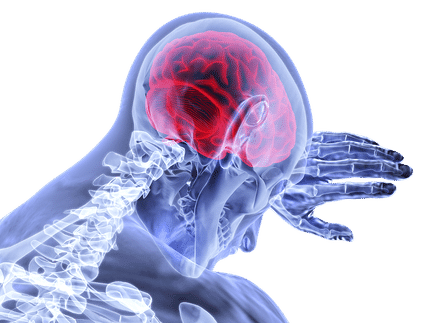Altered neural circuitry may lead to anorexia and bulimia
Anorexia nervosa and bulimia nervosa –disorders characterized by extreme eating behavior and distorted body image – are among the deadliest of psychiatric disorders, with few proven effective treatments.
A landmark study, with first author Tyson Oberndorfer, MD, and led by Walter H. Kaye, MD, professor of psychiatry at the University of California, San Diego School of Medicine, suggests that the altered function of neural circuitry contributes to restricted eating in anorexia and overeating in bulimia. The research, published June 4 in the early on-line edition of the American Journal of Psychiatry, may offer a pathway to new and more effective treatments for these serious eating disorders.
"It has been unknown whether individuals with anorexia or bulimia have a disturbance in the system that regulates appetite in the brain, or whether eating behavior is driven by other phenomena, such as an obsessional preoccupation with body image," said Kaye, director of the UCSD Eating Disorders Treatment and Research Program. "However, this study confirms earlier studies by our group and others that establish a clear link between these disorders and neural processes in the insula, an area of the brain where taste is sensed and integrated with reward to help determine whether an individual hungry or full."
The UC San Diego study used functional MRI to test this neurocircuitry by measuring the brain response to sweet tastes in 28 women who had recovered from either anorexia or bulimia.
Relative to a cohort of 14 women who had never suffered from either disorder, those recovered from anorexia had significantly diminished, and those recovered from bulimia, significantly elevated responses to the taste of sucrose in the right anterior insula.
"One possibility is that restricted eating and weight loss occurs in anorexia because the brain fails to accurately recognize hunger signals," said Oberndorfer. "Alternately, overeating in bulimia could represent an exaggerated perception of hunger signals."
A recent complementary study that investigated brain structure in anorexia and bulimia nervosa similarly highlights that the insula could be an integral part of eating disorder pathology.
The researchers added that such studies could have very important implications for treatment, and that identifying abnormal neural substrates could help to reformulate the basic pathology of eating disorders and offer new targets for treatment.
"It may be possible to modulate the experience by, for example, enhancing insula activity in individuals with anorexia or dampening the exaggerated or unstable response to food in those with bulimia," said Kaye. Studies indicate that healthy subjects can use real-time fMRI, biofeedback or mindfulness training to alter the brain's response to food stimuli. For patients with anorexia who have an overly active satiety signal in response to palatable foods, the researchers suggest bland or even slightly aversive foods might prevent the brain's overstimulation. Medications may also be found that enhance the reward response to food, or decrease inhibition to food consumption in the brain's reward circuitry.
Most read news
Other news from the department science

Get the life science industry in your inbox
By submitting this form you agree that LUMITOS AG will send you the newsletter(s) selected above by email. Your data will not be passed on to third parties. Your data will be stored and processed in accordance with our data protection regulations. LUMITOS may contact you by email for the purpose of advertising or market and opinion surveys. You can revoke your consent at any time without giving reasons to LUMITOS AG, Ernst-Augustin-Str. 2, 12489 Berlin, Germany or by e-mail at revoke@lumitos.com with effect for the future. In addition, each email contains a link to unsubscribe from the corresponding newsletter.





















































